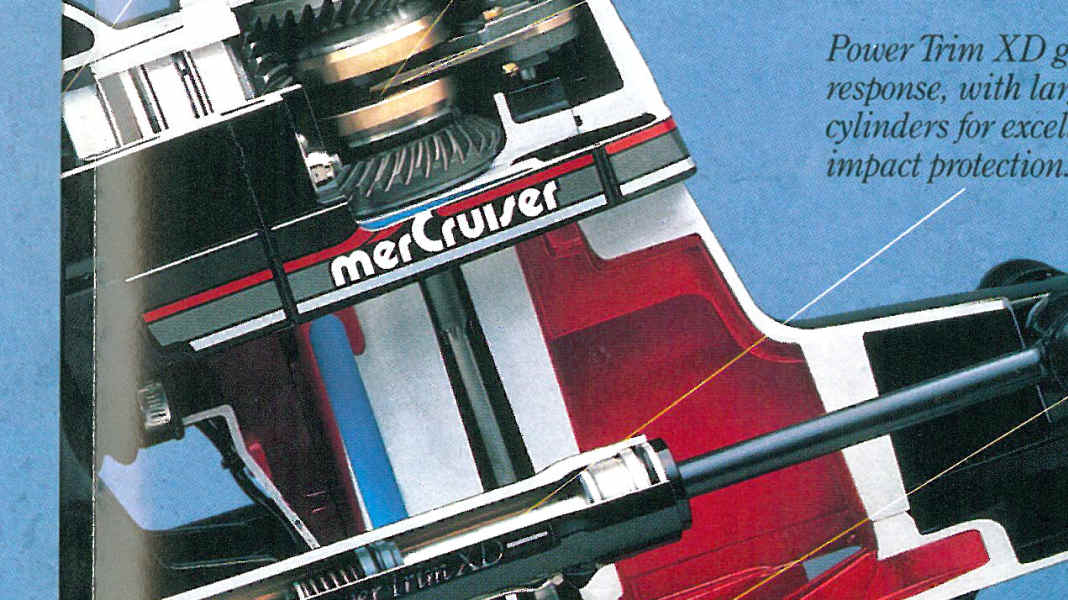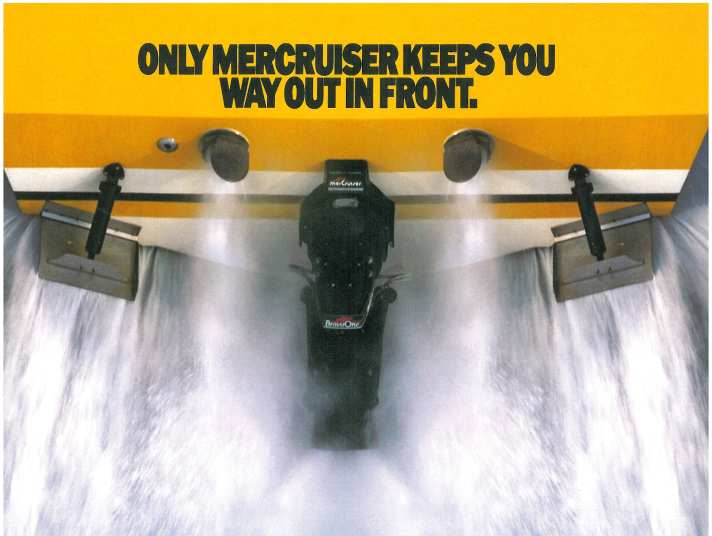

In 1950, the name Carl Kiekhaefer was known in the USA for high-performance outboards. They ran under the name "Mercury". However, when one of the engineers presented a sketch of an engine with a Z-drive, the company boss was not convinced by the concept and asked his employee not to waste his time. Any possible distraction could cost market share. The engineer then presented the drawings in Europe, at Volvo Penta - where he was met with an open ear.
Competition stimulates business, they say. It must have been no different in 1959 when Volvo Penta presented the first modern sterndrive at the New York Boat Show. Kiekhaefer's opinion of the sterndrive concept then changed abruptly. "A 'bad' idea became a 'really good' idea," says son Fred Kiekhaefer.
The successful outboard engine designer challenges his employees to produce a more powerful and better unit than the competitor Volvo Penta with its 80 hp. Kiekhaefer wants to supply the market with more powerful models, where he sees the greatest sales potential.
A test engine is built at the Mercury branch near Fond du Lac and tested in Florida in the strictest secrecy. Carl Kiekhaefer is satisfied with the performance of the engine and is convinced that he has constructed a masterpiece with this object.
The first engine called "MerCruiser" with sterndrive is presented to the public at the boat show in Chicago in 1961. At this time, the product range included engines from 125 hp to 200 hp, and the competition was left behind with their weaker products.
Carl Kiekhaefer is aware that the sterndrive will change the boat market. Nothing stands in the way of using automobile engines as inboard motors for boats. The engines are also more powerful and cheaper than the special designs for outboards.
The Z-drive is more versatile than the shaft drive with rudder blade. In addition to steering, it can also be used for trimming. This is made possible by the vertical and horizontal swivelling of the drive. Very similar to an outboard motor, only these were not as powerful back then.
Over a dozen engine manufacturers now produce their own Z-drives.
However, nobody can challenge MerCruiser's market dominance. Carl Kiekhaefer underpinned the superiority of MerCruiser engines and drives with numerous victories in many races. Outboards continued to be fitted to boats under 18 feet - larger sports boats were fitted with inboards with sterndrives.
The engineers were able to record another upswing on the company's tenth anniversary. The reason for this was the introduction of the MerCruiser 888, a V8 engine with 188 hp, power trim and propeller hub exhaust. A little later, the power output climbed to 198 hp, and then to an impressive 330 hp.
The mark of one million MerCruisers with Z-drive sold was reached in mid-1985. In 1986 and 1987, the Americans from Fond du Lac brought the Alpha and Bravo One drives onto the market. But the engines themselves were also developed further, and by the end of the 1980s, three Magnum machines were available to water sports enthusiasts. Awareness of the MerCruiser brand continued to grow and on 15 March 1995, sales exceeded two million units.
Today, MerCruiser offers more than 20 different packages with sterndrives. Inventions such as Axius, the first navigation joystick for sterndrives, and Sea-Core corrosion protection continue to guarantee the company a leading position in the sterndrive inboard market.
